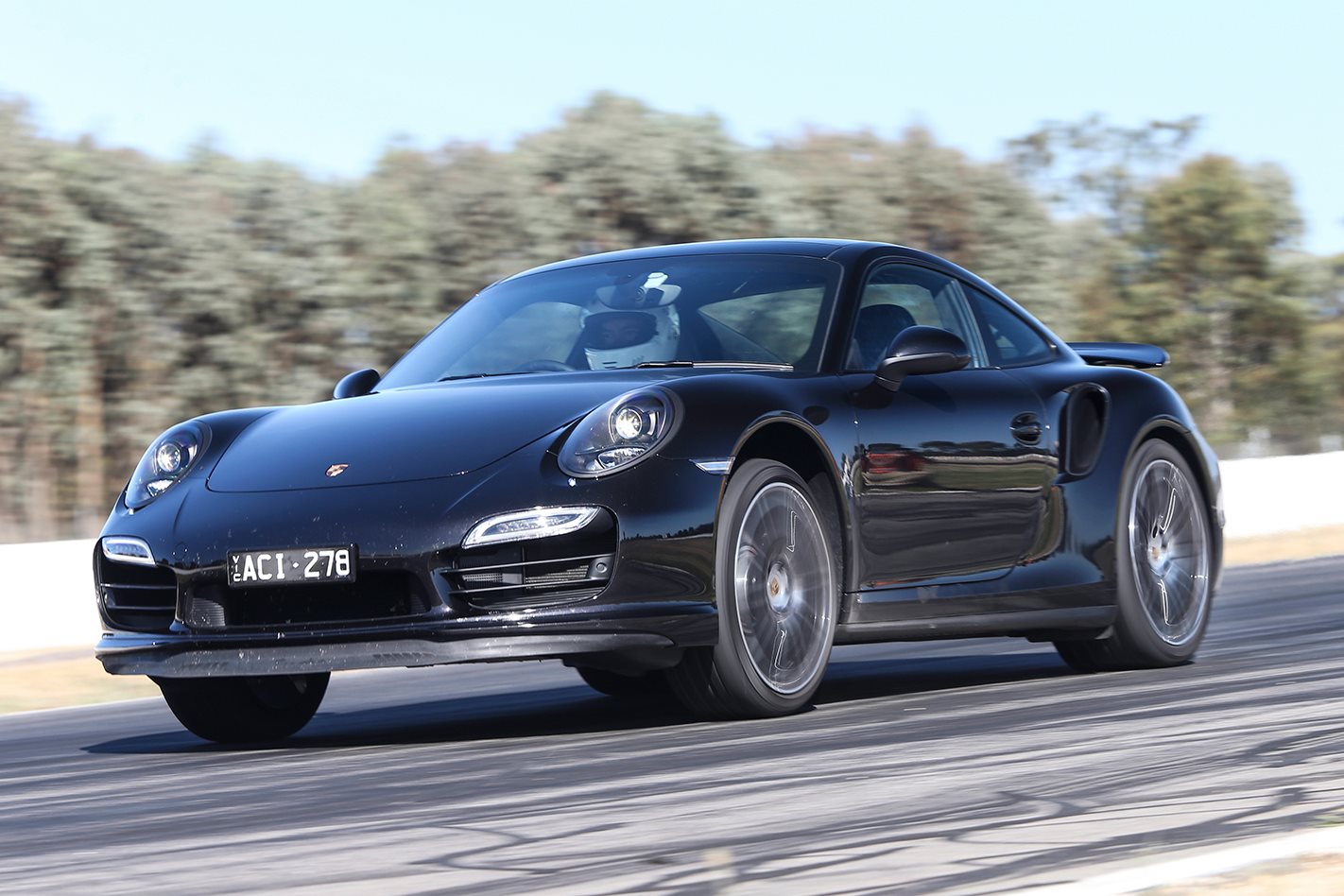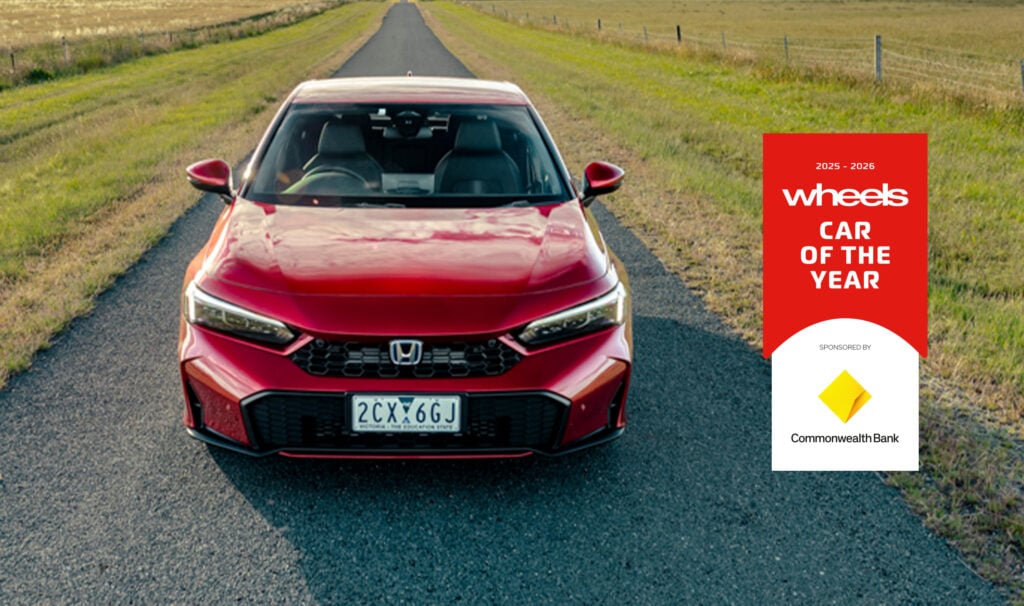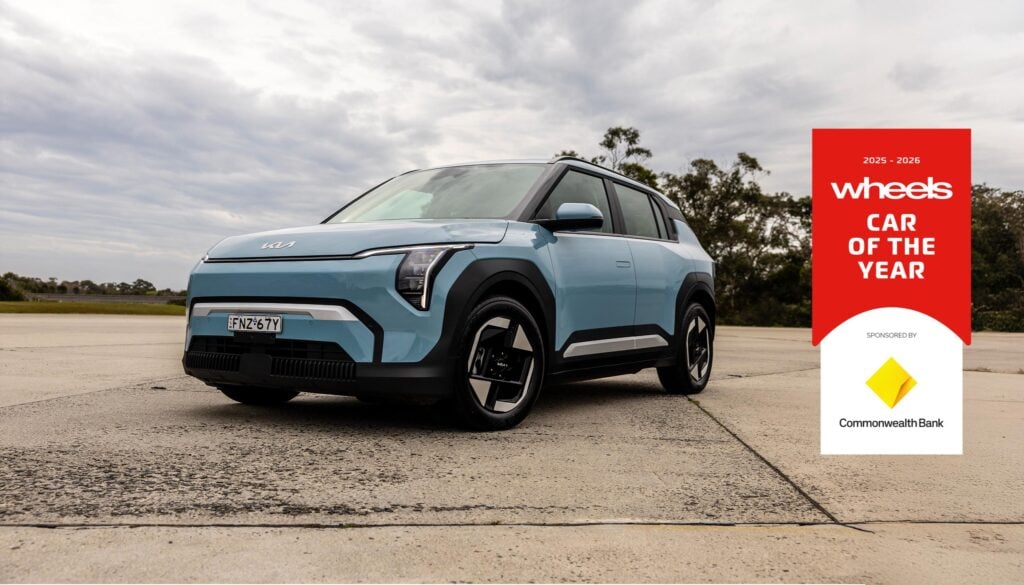Surprise! Shout out if you didn’t see this result coming. Ah, silence.
And silent certainly described our blue 911 Turbo parked in the Victorian High Country, its rock-punctured radiator relieving itself all over Granya Gap Road. Given he was last to drive it, Dylan broke it (after all, free of human intervention, cars don’t break themselves).
Suddenly, in an event Porsche has largely dominated throughout PCOTY’s quarter-century history, it looked like perhaps the most all-round accomplished 911 ever to turn a tyre was facing a DNF. We hadn’t run the numbers yet.
Thankfully, Porsche Oz sent us a black replacement car with zero notice, for which we are hugely grateful. And so the hottest of favourites was kept in the PCOTY running.
Equally thankfully, I (and a couple of other judges) had completed our road loop testing of the $366,500 ‘basic’ (as opposed to the top-spec S) Turbo prior to radiator-gate. Having sampled Porsche’s myriad 911-based winners throughout the German icon’s extraordinary PCOTY hit rate, a half-dozen kays of grand-touring muscle flexing its 3.8-litre boxer revealed that, indeed, the turbocharged all-paw 911 had moved the game forward everywhere when tasked with sensible, real-world driving.
Let’s ignore sheer heroics for a moment. For all-round automotive goodness, the Turbo isn’t just unflappable, it’s a multi-layered benchmark.
In comfort mode, between stationary and urban commuting speed, the Turbo is probably the smoothest machine of the PCOTY field. Its transmission shifts cleaner than RS7’s, its low-rpm tractability – 660Nm from 1950rpm – more malleable and user-friendly than the Maloo’s or Jag’s.
Its structure is so stiff and its architecture so sorted that its dampers, when set soft, offer ride comfort to match its rivals’ best without hindering a connection with the road that only the firmer-riding Cayman GTS can match.
Sure, you expect it to be exceptionally appointed for its price, but unlike other big-dollar machinery, it neither assaults you with motorsport-esque gimmickry nor superfluous bells and whistles.
It’s not simply superbly made but has the kind of ergonomic purity that offers not only hard-driving purpose but exceptional long-haul comfort. It’s also easy to see out of, has a scant turning circle and offers a neat ‘sailing’ fuel-saving function that decouples drive and idles the engine when you lift off throttle at a cruise.
Had this been Luxury Car Of The Year, the 911 Turbo would be a front-runner. It’s such a liveable, easy-to-use vehicle. You really have to be pedantic to find shortcomings, and those that do exist are few and minor. It can be thirsty when pedalled with vigour. And, really, for the lofty outlay, it should have a reversing camera (though it does have sensors).
Another fine attribute is that it’s not Jekyll-and-Hyde bipolar through the curse of electronic band-aids. When the road opens up, a squeeze of the right foot is all it takes to enhance and amplify the one glorious character the Turbo possesses.
All without the laborious drive-mode fiddling or ESP button-prodding most of its PCOTY rivals demand as a wake-up call. The Turbo treats performance like a massive volume knob.
And when it pumps up that volume, it’s to AC/DC arena-like levels of potency. Nothing in this year’s field was so effortlessly swift, so within its abilities when everything else – bar the Cayman – was getting hot under the collar and squirrelly underfoot. Conversely, the Turbo always seems to engage its driver; it’s completely co-operative without argument or fight.
From the outside, the impossibly fat and squat 911 looks unwieldy, yet from behind the wheel the more you dig in the more the Porsche seems to shrink around you. All the other larger PCOTY entries this year seemed to do quite the opposite. Push on and the RS7 would strain against its weight, the Maloo would get more ungainly, the M4 looser and less composed.
Such is the Turbo’s blend of comfort, enjoyment and effortless pace that, cabin and boot space of the Audi notwithstanding, the big Porsche would’ve romped it in for Grand Tourer Of The Year if that was the criterion. It’s so quick even at its own six- or seven-tenths that your biggest open-road issue is rounding up other traffic.
Then, when you give it the berries – sweet Jesus it’s quick! The entry in my notebook after my Granya Gap Road punt contains just two words: “Holy firetruck!” Or, ahem, some rhyming words to that effect.
“I just saw this explosion of blue in the mirrors,” joked Morley, who had been given a lengthy headstart in the Jag, probably PCOTY 2014’s second-quickest point-to-point open-road device.
Where does its speed come from? From the brilliantly calibrated feel from its tremendously powerful brakes. From its incredible front-end point, particularly in tight corners, enhanced by a new infinitely variable rear-steer system. From its otherworldly road-holding grip and unflappable body control.
From converting the 3.8 boxer’s incredible any-rpm shove into intuitively controllable corner-exit drive, thanks to tricky rear-axle torque-vectoring, and revised front-to-rear-axle torque control via a new hydraulically-actuated centre differential. From the finely honed cohesion of all of these systems working in harmony – when the radiator hasn’t spilt its guts.
Enter Big Black, delivered on a flatbed to Winton Raceway. It arrived at lunchtime. The mercury was in the 30s – far from ideal – but the launch pad was clean. And off it marched, three seconds dead to 100km/h, a whisker short of the Terrifying Twos. Porsche’s official claim for the base Turbo is actually 3.2 seconds. And it rates the 412kW/700Nm ‘S’ version only one-tenth quicker (3.1sec) still.
Of course, the heroics don’t end there. The 400m mark flashed by in just 10.95sec at 202km/h, nearly a full second swifter than the next-quickest competitor, the RS7. And just to rub dirt into its three 400+kW rivals (RS7, Jag, HSV), the 383kW Porker bounded from 80 to 120km/h in a victorious, head-pinning 1.87sec!
As if to drill home its total statistical domination, the Turbo’s 32.87m braking distance was the shortest of the field.
The MOTOR collective mounted the pitlane wall as Our Luffy launched Big Black out onto the Winton circuit. The time to beat was the M4’s 1:36.2 stunner, set much earlier in the day in cooler conditions. Bets were laid…
Luffy pulled off a blinder and, crikey, did it look fast from our pit-wall vantage point. Then the car sauntered back in, stopped, and Wazza rattled off the numbers as the Porsche’s brakes tink-tinked in cool-down contraction.
“One thirty-three one,” he said. Good enough to vault into equal fourth on MOTOR’s all-time Winton laptime leaderboard, equal with the track-honed GT3 RS, which is essentially a road-going Carrera Cup car. Holy firetruck!
Wazza later admitted that there were probably a few tenths more in the tank, but we’d already pushed the friendship with Porsche Oz and wanted to ensure Big Black was returned home in pristine condition. He also explained that he opted not to switch the ESP system off, either, such is its superb performance-friendly calibration.
Few off-the-hook superlatives describe just how fast and capable the Turbo is on a smooth, grippy racetrack. So, instead, I’ll point out a few highlights for perspective.
No other PCOTY 2014 entry demands such an accelerated brain process to keep up with the
Turbo’s abilities. Yet conversely, it’s among the easiest cars to stay on top of because it is so friendly and intuitive to drive. This 911 works with you, not against you, with bona-fide supercar pace but with companionship few, if any, supercars offer.
Its scintillating 10-second straight-line potency is perfectly matched with extraordinary abilities both in corners and under braking. And that’s an incredibly tough balance to achieve in a track-focused special, let alone a comfortable, luxurious all-rounder road car that you’d happily lend to your Nanna to drive to the shops in.
And while a Turbo S might’ve milked some extra performance here and there, frankly, the basic Turbo offers so much goodness and such eye-widening go-fast capability that you’d wonder if it’s worth the extra $80K for the 412kW ‘S’ version. In a sense, then, even the $359,800 ask seems good value.
A big round of applause, then, to help break that inevitable silence.






